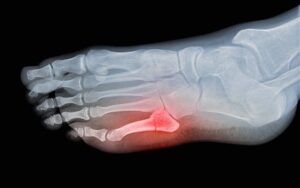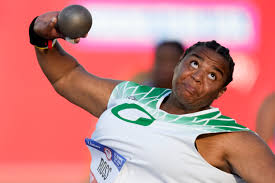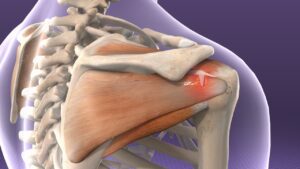Introduction
As a student-athlete, injuries can feel like a frustrating setback, but they don’t have to derail your season or long-term performance. Whether it’s knee discomfort, shoulder tightness, or an ankle sprain, knowing how to properly handle these injuries is crucial for a safe and effective recovery. As an orthopedic surgeon, I’ve seen firsthand how early intervention, proper treatment, and smart rehabilitation can make all the difference. Here’s what student-athletes should do when encountering common sports injuries.
—
1. Recognizing the Early Signs of Injury
Many student-athletes try to push through pain, assuming it’s just part of the game. However, ignoring early warning signs can turn a minor issue into a serious problem. Pay attention to:
Knee Discomfort: Aching pain, swelling, instability, or clicking sounds.
Shoulder Tightness: Reduced range of motion, pain when lifting or throwing, or a sensation of pinching.
Ankle Sprains: Swelling, bruising, difficulty bearing weight, or instability when walking.
—
2. Immediate Steps After an Injury
If you experience pain or discomfort during practice or a game, follow these steps to prevent further damage:
R.I.C.E. Method (for acute injuries like ankle sprains and knee pain)
Rest: Avoid putting weight or stress on the injured area.
Ice: Apply ice packs (wrapped in a cloth) for 15–20 minutes every 2 hours to reduce swelling.
Compression: Use an elastic bandage to control swelling and support the joint.
Elevation: Keep the injured limb elevated to minimize swelling.
For shoulder tightness or strain, gentle stretching and icing after activity can help reduce inflammation. However, if the pain persists, stop overhead movements and seek medical attention.
—
3. When to See an Orthopedic Specialist
Not all injuries require an immediate trip to the doctor, but certain symptoms should never be ignored. Visit a specialist if you experience:
Persistent pain that doesn’t improve after a few days of rest.
Joint instability (feeling like your knee, ankle, or shoulder is “giving out”).
Swelling that doesn’t go down after 48 hours.
Numbness, tingling, or loss of function.
Difficulty performing normal athletic movements after a short recovery period.
—
4. Safe Return to Sport: The Role of Rehabilitation
Rehab isn’t just about recovering—it’s about coming back stronger and preventing re-injury. A physical therapist or athletic trainer will guide you through:
Strengthening exercises to rebuild muscle support around the joint.
Mobility work to restore range of motion.
Sport-specific drills to ensure you’re ready for game-level activity.
Rushing back too soon increases the risk of re-injury, so follow the prescribed recovery timeline.
—
5. Mental Resilience in Recovery
Being sidelined can be mentally tough, but staying engaged with your team, setting rehab goals, and focusing on long-term health can help keep you motivated. Trust the recovery process and remember—healing properly now means fewer setbacks in the future.
—
Conclusion
Injuries are a reality of competitive sports, but how you handle them determines your ability to return stronger. Recognizing symptoms early, following proper recovery protocols, and seeking professional help when necessary will ensure you heal correctly and minimize long-term damage. Stay patient, follow your rehab plan, and prioritize your health to achieve lasting athletic success.
—
Blog 2: Preventing Common Injuries in Student-Athletes
Introduction
Every student-athlete wants to stay in peak condition and avoid the frustration of injuries. While some injuries are unavoidable, many can be prevented with smart training, proper technique, and proactive care. As an orthopedic surgeon, I often see athletes suffering from preventable conditions caused by poor preparation, muscle imbalances, or overuse. Here are key strategies to keep yourself injury-free and performing at your best.
—
1. Strengthen Key Muscle Groups
Weak muscles place excess strain on joints and increase the likelihood of injuries like sprains and strains. Focus on:
Knee Stability: Strengthen the quadriceps, hamstrings, and glutes with squats, lunges, and leg presses.
Shoulder Health: Incorporate rotator cuff exercises (band rotations, shoulder raises) to stabilize the joint.
Ankle Support: Perform calf raises, single-leg balance drills, and resistance band exercises to strengthen ankle stability.
Strength training should be a regular part of your routine to build resilience against impact and sudden movements.
—
2. Warm-Up and Cool Down Properly
Skipping warm-ups or cool-downs can set you up for injury. Implement a dynamic warm-up before activity and a cool-down after:
Warm-Up:
Jogging or jump rope for circulation.
Leg swings, arm circles, and hip openers for mobility.
Light sport-specific movements (e.g., dribbling for basketball, kicking drills for soccer).
Cool-Down:
Static stretching for flexibility.
Foam rolling for muscle recovery.
This reduces muscle tightness, improves circulation, and prevents strain-related injuries.
—
3. Maintain Proper Form and Biomechanics
Poor technique leads to unnecessary stress on joints. Work with a coach or athletic trainer to refine your movement patterns, ensuring:
Jumping and Landing Mechanics: Land softly with knees bent to absorb impact.
Throwing Mechanics (for overhead sports): Avoid excessive strain on the shoulder by using proper arm positioning.
Running Posture: Keep an upright chest and avoid overstriding to reduce knee stress.
Good mechanics minimize repetitive




